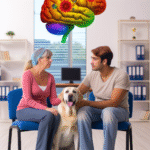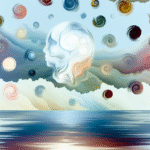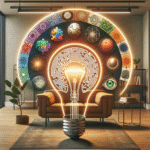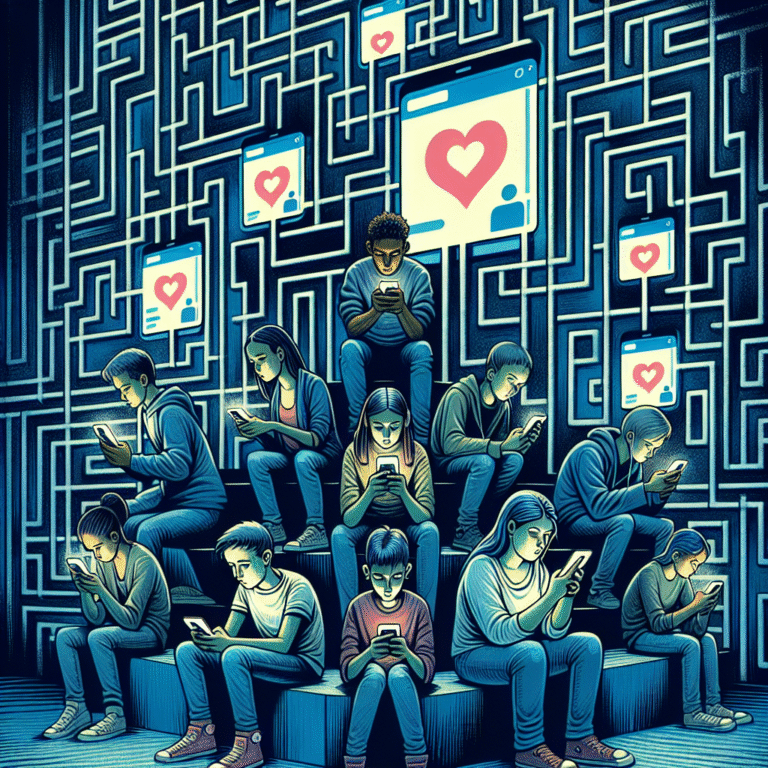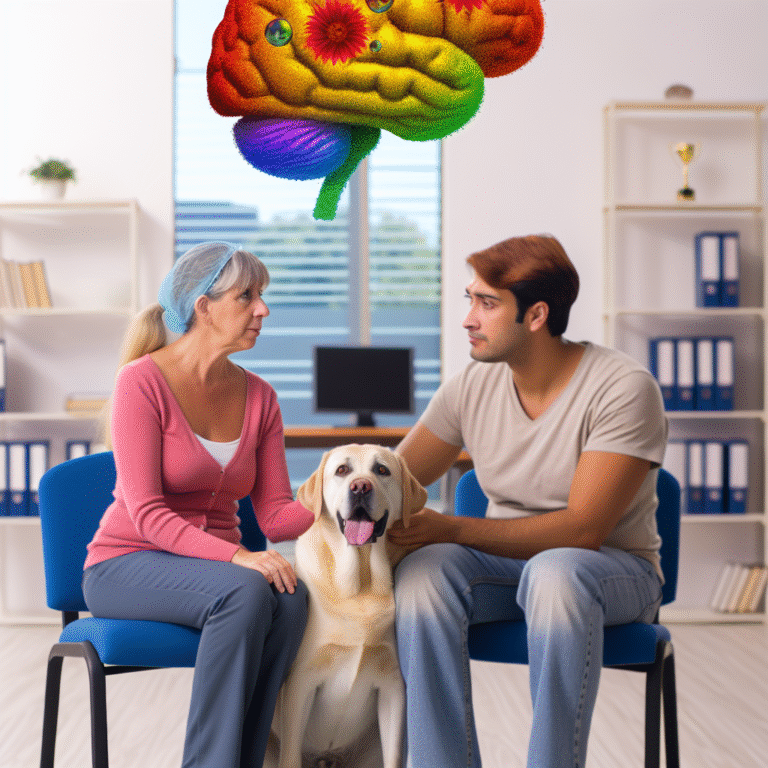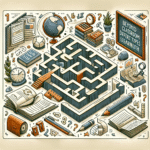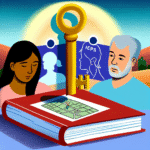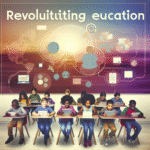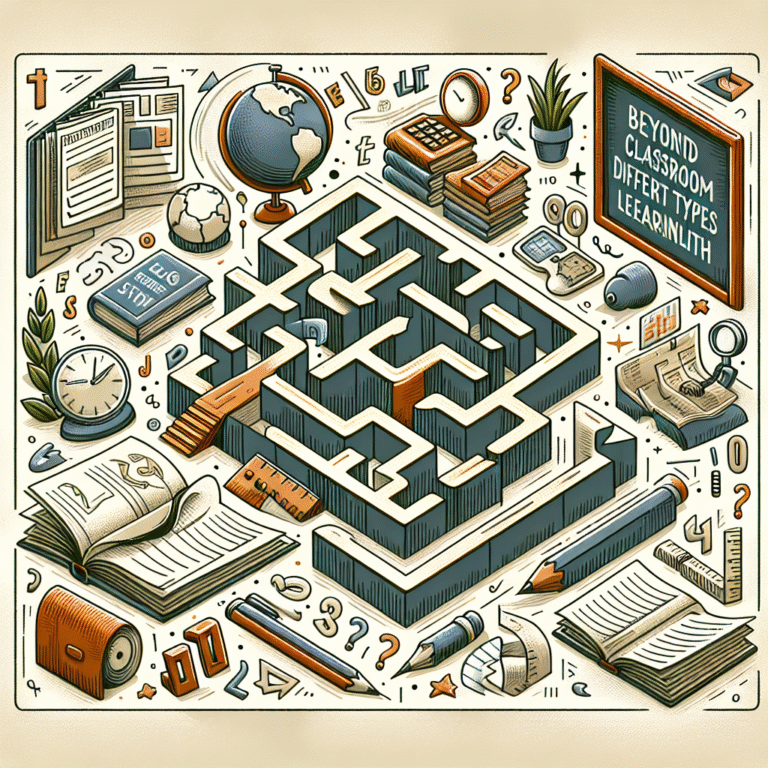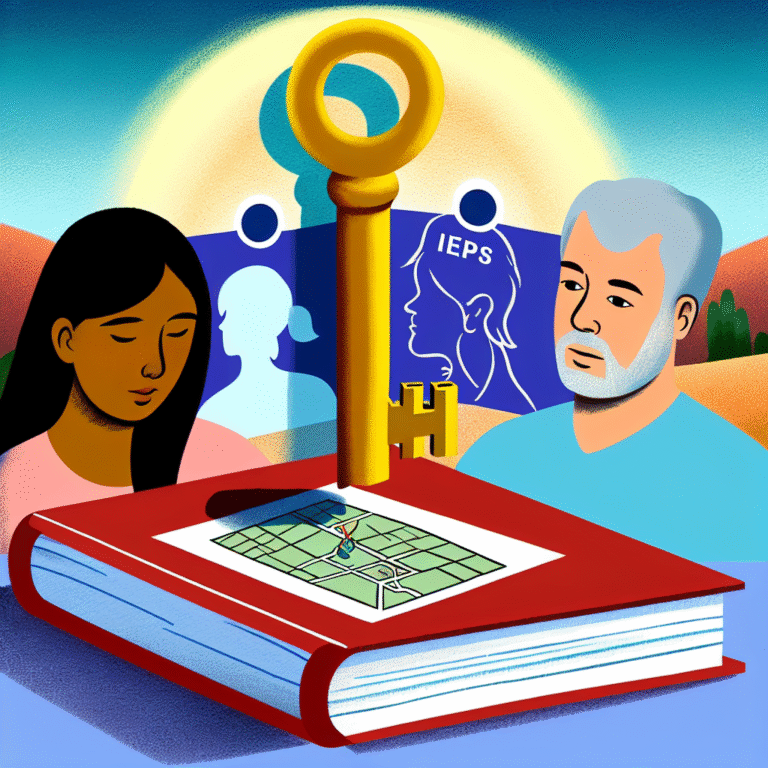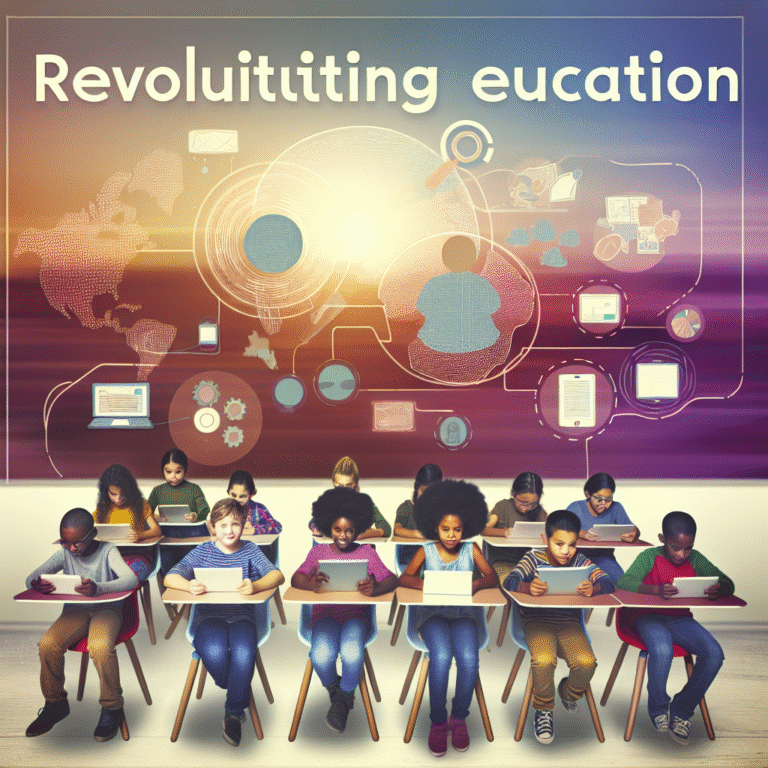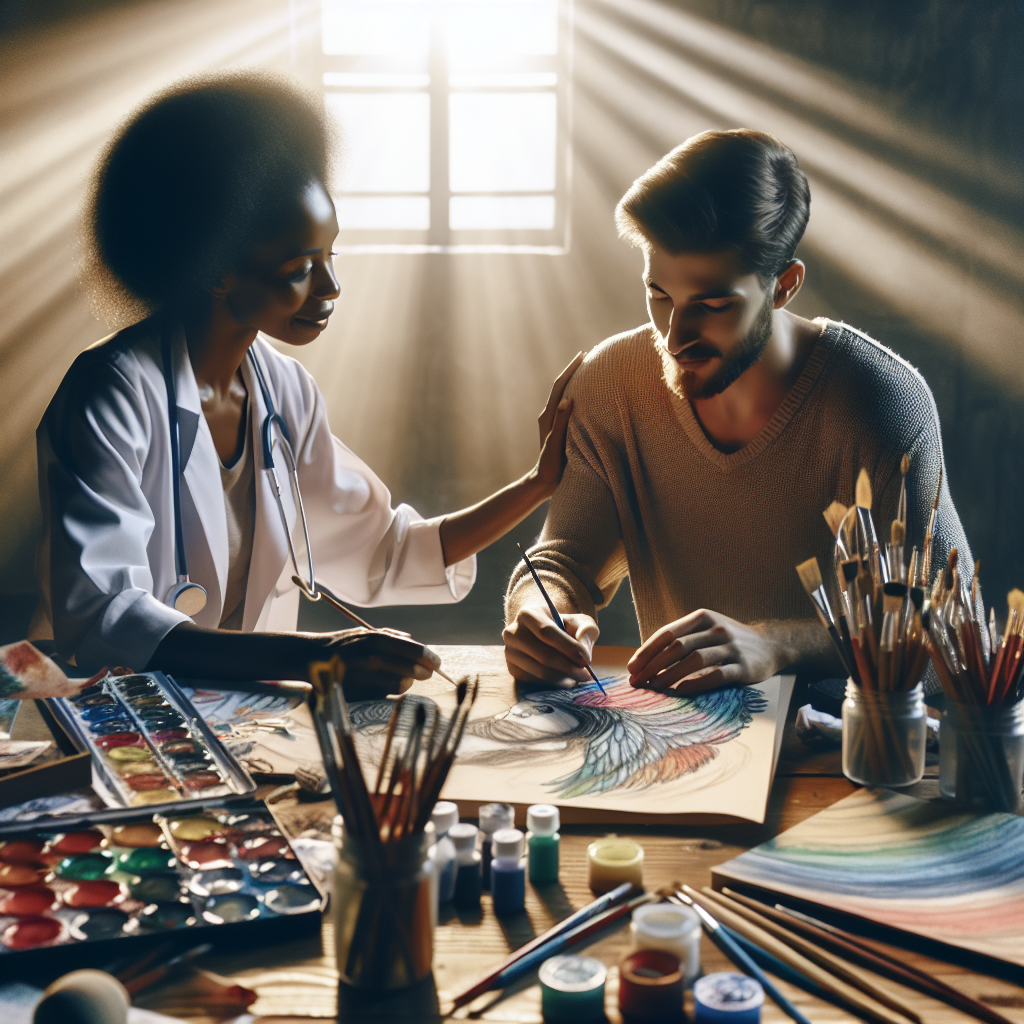
Creating Connections: The Ultimate Psychological Benefits of Art Therapy Techniques
Introduction
Imagine a world where the barriers of communication dissolve, where the complexity of emotions finds a canvas to express itself, and where the healing touch of creativity becomes a pathway to mental well-being. Welcome to the transformative realm of art therapy—a therapeutic innovation that not only fosters creativity but also encourages connection. Creating Connections: The Psychological Benefits of Art Therapy Techniques explores the profound psychological advantages of these methods, shedding light on how they can enhance emotional resilience, facilitate self-expression, and cultivate meaningful connections with oneself and others.
Art has played a fundamental role in human expression for millennia, and its therapeutic applications have increasingly gained prominence in recent decades. From individuals grappling with mental health issues to communities striving for cohesion, the psychological benefits of art therapy techniques are profound and far-reaching. This article delves into the essence of creating connections, ultimately illustrating the power of art as a vehicle for healing.
The Foundations of Art Therapy
Understanding Art Therapy
Art therapy is an integrative mental health practice that combines artistic exploration with psychotherapeutic techniques. It encourages individuals to create art as a route to self-discovery and emotional introspection. By using various forms of visual arts—painting, drawing, sculpture, and collage—participants can explore feelings, reconcile emotional conflicts, and foster a sense of identity.
The Psychological Framework
At its core, Creating Connections: The Psychological Benefits of Art Therapy Techniques draws from both psychological theory and artistic practice. The therapeutic benefits stem from several psychological foundations:
- Expressive Therapy Models: These emphasize the cathartic experience of expressing feelings through art.
- Cognitive Behavioral Techniques: These teach skills to challenge negative thought patterns while creating.
- Mindfulness Practices: These promote being present in the moment, which can be achieved through the focus on art-making.
Call for Connection
Humans are inherently social creatures. The need for connection—whether with ourselves or with others—can profoundly impact mental health. Art therapy plays a pivotal role in bridging these gaps, fostering empathy, and building understanding among individuals and communities.
The Psychological Benefits of Art Therapy Techniques
1. Enhancing Emotional Expression
Art therapy provides a safe space for individuals to express emotions that may be difficult to articulate verbally. This non-verbal form of communication is particularly beneficial for those dealing with trauma or anxiety.
Case Study: The Power of Expression
A clinical trial involving children with PTSD showcased the power of expressive art therapy. Researchers observed that children who participated in art therapy exhibited a 30% reduction in symptoms compared to those who received standard talk therapy. This highlighted Creating Connections: The Psychological Benefits of Art Therapy Techniques as a crucial tool for emotional healing.
Analysis: This case underlines how art becomes a voice for emotions that words can’t capture, reinforcing the inherent human need to express and share feelings.
2. Building Self-Esteem and Confidence
Engaging in creative activities fosters a sense of accomplishment and mastery, which can significantly boost self-esteem.
Case Study: Empowering Through Creativity
An art therapy program implemented in a rehabilitation center demonstrated noticeable increases in participants’ self-esteem. Activities that focused on creating personal vision boards allowed individuals to visualize their goals and dreams, significantly impacting their self-perception.
Analysis: This illustrates how the act of creating can empower individuals, demonstrating Creating Connections: The Psychological Benefits of Art Therapy Techniques in transforming self-doubt into self-assuredness.
3. Facilitating Social Connections
Art therapy is not just an individual pursuit; it can also cultivate group dynamics and relationships. Group art therapy sessions can enhance social skills and foster mutual support.
Case Study: Community Healing
A community art project focused on healing from a natural disaster brought together diverse individuals to create a mural representing resilience. Participants reported increased feelings of community connection and shared purpose.
Analysis: The power of Creating Connections: The Psychological Benefits of Art Therapy Techniques is evident in how art can strengthen social bonds, demonstrating that collaborative creativity fosters collective healing.
4. Improving Cognitive Functioning
Creative processes stimulate the brain, promote problem-solving skills, and enhance cognitive flexibility.
Case Study: Cognitive Rehabilitation
In a study with elderly participants experiencing cognitive decline, those who engaged in art therapy showed improvement in memory and attention span. The word recall for participants who painted regularly was significantly higher than the control group.
Analysis: This reinforces the idea that the psychological benefits of art therapy techniques extend beyond emotional healing to cognitive enhancement, proving its versatility.
5. Promoting Mindfulness and Reducing Stress
The act of creating art can be meditative. Research shows that engaging in creative practices lowers cortisol levels and promotes relaxation.
Case Study: Stress Reduction in Veterans
A pilot program offered art therapy to veterans with anxiety and depression. Participants reported not only reduced symptoms of anxiety but also increased mindfulness and reduced stress levels, showcasing immediate therapeutic benefits.
Analysis: This illustrates the calming power of art and highlights Creating Connections: The Psychological Benefits of Art Therapy Techniques as a proven method for stress management.
Practical Applications of Art Therapy Techniques
Techniques and Modalities
Art therapy is not one-size-fits-all. Practitioners tailor techniques based on individual needs. Here are some popular methods that highlight the diversity of Creating Connections: The Psychological Benefits of Art Therapy Techniques:
| Technique | Description | Psychological Benefit |
|---|---|---|
| Drawing and Painting | Creating images to express feelings | Enhanced emotional expression |
| Collage Creation | Using images from magazines to convey ideas | Self-exploration and identity development |
| Sculpture | Working with clay or other materials | Physical engagement and mindfulness |
| Collaborative Projects | Group artworks that encourage interaction | Strengthened social connections |
| Art Journals | Keeping a personal art journal | Reflection and cognitive organization |
Integrating Art Therapy into Daily Life
Incorporating art therapy principles into everyday routines can yield significant psychological benefits. Here’s how to do it:
- Daily Doodles: Spend five minutes a day doodling or coloring.
- Creative Journaling: Maintain a journal that combines artistic expression with written reflection.
- Mindfulness Art Sessions: Set aside time each week for a focused art-making session, allowing thoughts to flow freely.
Embracing Challenges in Art Therapy
Common Misconceptions
Despite its benefits, several myths surround art therapy. Addressing these misconceptions is crucial for embracing its potential:
- "You Need to Be an Artist": Art therapy is not about artistic talent; it’s about the creative process and self-exploration.
- “Art Therapy is Only for Children”: It’s suitable and beneficial for all ages and demographics.
- “Art is Just a Hobby”: Art therapy is a structured therapeutic process designed to address psychological needs.
Navigating Resistance to Art Therapy
Some individuals may be resistant to engaging in creative processes, often due to fear of judgment or early negative experiences. Art therapists are trained to navigate these barriers and encourage a supportive environment. By normalizing the experience and emphasizing personal exploration, therapists facilitate a deeper connection with one’s creative self.
Conclusion
As we navigate the intricate pathways of our emotional landscapes, art therapy emerges as a powerful ally. By Creating Connections: The Psychological Benefits of Art Therapy Techniques, we can heal, grow, and foster deeper understanding within ourselves and among each other. Art therapy isn’t merely about producing art; it’s about the connections we forge—connections to our emotions, to our identities, and to the communities we belong to.
Whether you’re a mental health professional, a curious individual, or someone grappling with emotional challenges, the insights provided through art therapy can offer a profound avenue for healing and connection. As you embrace the creative process, remember that every stroke of the brush, every mark on the page, is a step toward connecting not only with yourself but also with the world around you.
FAQs
1. What qualifications do art therapists have?
Art therapists generally hold a master’s degree in art therapy or a related field and are licensed or certified by national or regional boards.
2. Is there a specific art medium that’s best for therapy?
No single medium is superior; the choice depends on personal preference and therapeutic goals. Painting, drawing, and clay work all offer different benefits.
3. How long does an art therapy session last?
Sessions typically last between 45 minutes to an hour, but duration can vary based on individual needs or group settings.
4. Can art therapy be combined with traditional therapy?
Absolutely! Many find that art therapy complements traditional therapies, enhancing the overall therapeutic experience.
5. Do I need to have prior art experience to benefit from art therapy?
No! Art therapy is designed for everyone, regardless of artistic ability. It focuses on the creative process rather than the artistic outcome.
As you explore the world of art therapy, remember: you hold the brush to your emotional canvas. Embrace creativity, make connections, and discover the healing that awaits you.

